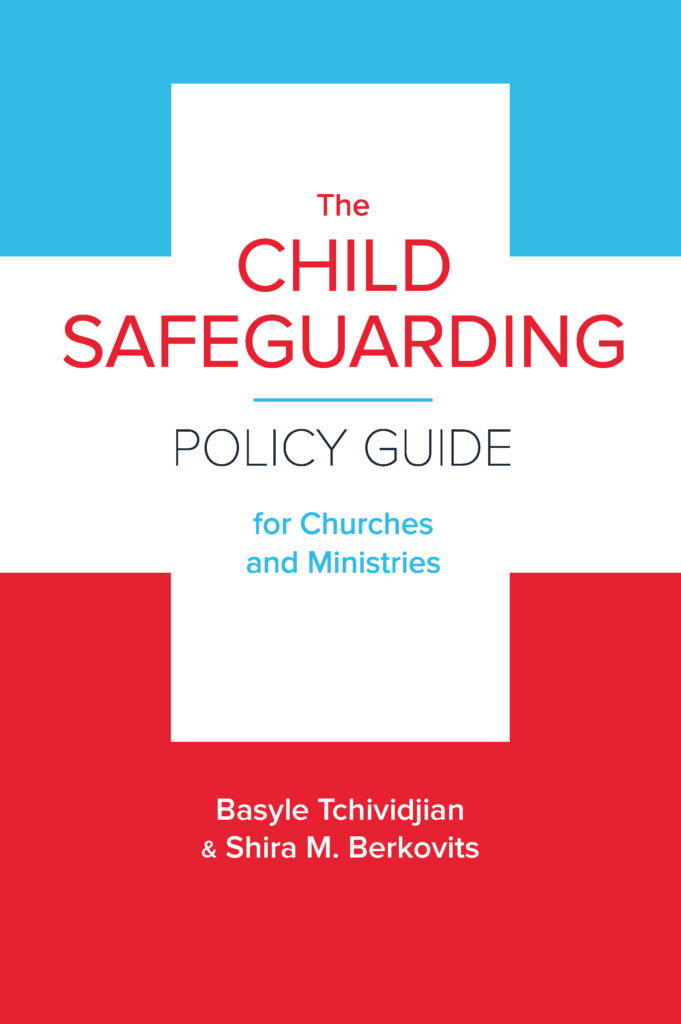First of all, you start the grooming process from day one . . . the children that you’re interested in . . . You find a child you might be attracted to . . . For me, it might be nobody fat. It had to be a, you know, a nice-looking child . . . You maybe look at a kid that doesn’t have a father image at home, or a father that cares about them . . . if you’ve got a group of twenty-five kids, you might find nine that are appealing, then you start looking at their family backgrounds. You find out all you can . . . which ones are the most accessible . . . you get it down to one that is the easiest target, and that’s the one you do.
Anna C. Salter, Predators, Pedophiles, Rapists, and Other Sex Offenders: Who They Are, How They Operate, and How We Can Protect Ourselves and Our Children (New York: Basic Books, 2003), 42.
This very disturbing quote is the response of a child sex abuser when asked how he picked out specific children at church to victimize. The child abuser’s frank confession of how he operates within the Christian community should alert every Christian to the pressing need to be educated about child sexual abuse and to learn how to respond to this tragic problem in a way that protects children and brings justice to those who victimize them. It is fairly safe to assume that most Christians want to protect children in the church from abuse.
However, wanting to protect children and knowing how to do it are two different things. We should not assume that we understand the extent of child abuse or what must be done to address it. Failure to acknowledge the prevalence of child abuse within the church, and the failure to grasp the many difficult issues associated with this abuse cause devastating and destructive consequences for the victim and the Christian community. Both Christian leaders and laypeople must become better educated about child sexual abuse so that children’s lives and souls are authentically protected and loved.
Recognizing the Value of Our Children
As Christians, our thinking about child abuse should be guided by how Jesus views and values children. Jesus told his disciples, “Whoever receives one such child in my name receives me” (Mark 9:37). In this one powerful statement Christ communicates the incredible value he and his Father place upon all children, in that our love for God is demonstrated by how we love and “receive” children.
A pastor once remarked, “Something is deeply amiss in the soul that does not descent (or is it really ascent) to love and hold a child.” In other words, it is impossible to authentically love God and not love his little ones. The Merriam-Webster Dictionary defines “welcome” as to “accept with pleasure the presence of.” In essence, Jesus is saying that we worship him through accepting with pleasure the presence of children—who are also designed to be worshipers of our great God! Loving, protecting, and advocating for children is an essential component of our overall worship of God, and an important tool God uses to raise up little worshipers.
Yet our culture often finds itself overlooking the most basic needs of its children, while adults are busy tending and caring for themselves. This devaluing of children often leaves them exposed to indescribable harm that results in physical, emotional, and spiritual consequences. Wess Stafford, president of Compassion International, puts it all too accurately, “Small, weak, helpless, innocent, vulnerable, and trusting, they are waiting victims for our simple neglect and most evil abuse. No matter what goes wrong, the little ones pay the greatest price.”

Understanding and Educating with Excellence
If the Christian community hopes to address the evils of child abuse, our seminaries must first educate future leaders about abuse in the church. At the minimum, every seminary should require at least ten hours of instruction on child abuse and how to prevent and respond to it. If tomorrow’s pastors and leaders fail to grasp these truths, we cannot expect them to be understood by the wider Christian community. The National Child Protection Training Center has taken the lead to develop such a curriculum for mainline seminaries. Our team at GRACE (Godly Response to Abuse in the Christian Environment) wrote The Child Safeguarding Policy Guide for Churches and Ministries to help churches and faith communities formulate policies and procedures to protect children and deal with possible child abuse in their ministries, school, and church. By walking through a wide range of scenarios, this book assists churches and ministries to assess their current child abuse policies and guide them through each step they should take to address the safety of children under their care.
Additionally, we must teach these truths at every level of Christian culture, in a manner that ensures that this terrible crime remains on the radar screen of every Christian. This can be accomplished through Sunday sermons, Sunday school and youth group curricula, small-group Bible studies, and even community church-wide gatherings. What a powerful testimony it would be if every church came together for the purpose of understanding and educating one another on this issue.
We must also educate the Christian community about the prevalence of child abuse and those who perpetrate such abuse. Christians must understand that abuse is not an issue that happens elsewhere, but is alive and well in every community. Every Christian should be aware of the following statistics:
- Child sexual abuse is seventy-five times more common than pediatric cancer.1
- One out of four girls, and one out of six boys, will be sexually abused by their eighteenth birthday.2
- According to the Department of Justice, there is one child molester per square mile in the United States.
- One in seven children between ages ten and seventeen have been sexually solicited online.3
We must also educate the Christian community about those who offend. In addition to the five exploitations described above, every Christian should have a basic understanding of the following common characteristics of many offenders:
1. Offenders are often the people you would least suspect.
Unfortunately, many in our faith community still believe that they can spot a child molester simply by appearance. Parents are most often on the lookout for the creepy-looking guy who hangs out at the park or outside of the school. All adults should be concerned and take action to protect children when they see such a person. However, do not allow that limited stereotype to identify those in our community who may be a danger to children. When selecting a jury, I often asked prospective jurors, “Can you tell me what a burglar looks like?” This question helped jurors understand that child molesters cannot be identified by appearance or social status. In my years as a child sexual abuse prosecutor, I prosecuted physicians, computer programmers, financial advisors, teachers, and even a child sexual-abuse investigator! We must teach our faith community that our protective antennae should be focused on behavior, not looks or economic status.
2. Offenders often prey upon trusting and vulnerable young people.
In order to sexually victimize a child, an offender must first gain access to the child. As a result, offenders spend much time planning and executing what is commonly known as the “grooming” process, in which the offender gains access to the child in order to develop a trusting and/or authoritative relationship. Once such a relationship has been created, the perpetrator is often free to abuse. Access to such children is obtained by the already existing position of the offender to the child or the child’s family (family members, friends, coaches, youth pastors, etc.); or by the intentionally created position whereby an offender targets a child and begins to lavish that child with attention, gifts, and “love.” This can include an adult who takes an interest in a troubled child, a child from a broken home, or a child he or she has similar interests with. Both categories of access assist offenders to target vulnerable children, who trust and obey them. Again, we must teach our faith community to keep its antennae up so that children who fall into either category are carefully watched and protected.
3. Offenders have many victims.
One study indicates that child molesters who sexually victimize females outside of the home averaged approximately twenty different victims. The same study found that child molesters who sexually victimize males outside of the home averaged approximately one hundred fifty different victims!4 The reality is, those who sexually victimize children likely have victimized dozens of other children during their lifetime. Not only does this open our eyes to the prevalence of this tragic epidemic, but it should also prepare us to respond to individuals within our faith community who are caught engaging in criminal behavior against a child, demonstrate outward remorse, and beg for restoration, claiming that this was the only child they ever victimized. Based upon these statistics, the offender is most likely lying—which means they are continuing to deceive in order to reestablish trust and access to children.
A Christian Response
The purpose of providing such startling information is not to frighten, but to awaken a generation that all too often fails to grasp the gravity and reality of child sexual abuse within our own faith community. The above is just a sample of the common types of behavioral characteristics found among those who sexually victimize children. Clinical psychologist Anna Salter’s Predators, Pedophiles, Rapists, and Other Sex Offenders: Who They Are, How They Operate, and How Can We Protect Ourselves and Our Children (New York: Basic Books, 2003) is a great resource that identifies and explains how these offenders think and act. Every parent and pastor should read this book.
What is the Christian response when we learn of the prevalence of child sexual abuse in our culture? Shall we respond as the priest or Levite, making up seemingly “godly” reasons why we must walk by (see Luke 10)? The gospel calls each of us to action toward the hurting, driven by our adoration and love for God. A Christian response to child sexual abuse can only occur when all of us in the Christian community take concrete steps to protect our children and respond to this deadly sin in a manner that draws survivors into the arms of Jesus.
1. “A Snapshot of Pediatric Cancers,” National Cancer Institute, Washington, DC: U.S. National Institutes of Health (2008).
2. Centers for Disease Control and Prevention. (2005) Adverse Childhood Experiences Study: Data and Statistics. Atlanta, GA: Centers for Disease Control and Prevention, National Center for Injury Prevention and Control. Retrieved June 10, 2013 from: www.cdc.gov. (Document no longer available on website.)
3. Janice Wolak, Kimberly Mitchell, and David Finkelhor, “Online Victimization of Youth, Five Years Later,” Crimes against Children Research Center (2006), www.missingkids.com (last accessed 1/22/13). (Document no longer available on website.)
4. “The Abel and Harlow Child Molestation Prevention Study” (2002), http://www.childmolestationprevention.org (last accessed 1/22/13). (Document no longer available on website.)
Excerpt adapted from Protecting Children from Abuse in the Church written by Basyle Tchividjian © 2013 by World Reformed Fellowship. Used by permission of New Growth Press. May not be reproduced without prior written permission.
The Child Safeguarding Policy Guide for churches and ministries
This handbook is designed to help churches and faith communities formulate policies and procedures to protect children and deal with possible child abuse in their ministries, school, and church. By walking through a wide range of scenarios, this book will assist churches and ministries to assess their current child abuse policies and guide them through each step they should take to address the safety of children under their care.






